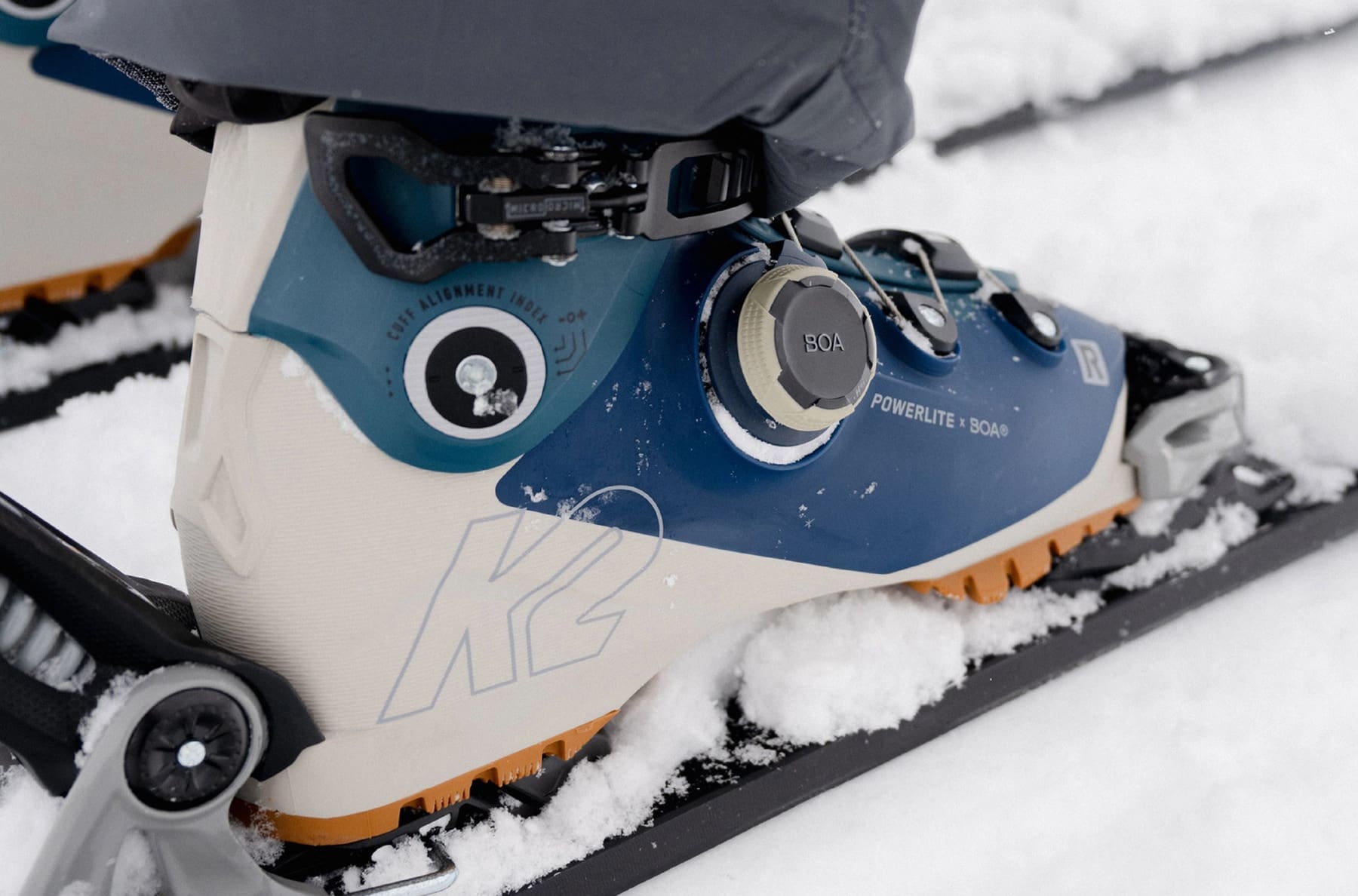Share This Article
One thing that snowboarding has always had going for it was not having to deal with the pain associated with badly fitting ski boots, which lets face it most of us have boots that are not a perfect fit all the time. Our feet swell, shrink, get injured and all of that means the boot needs to change shape a little. Ski boots have been designed to hold the ankle and foot rigidly providing control over the angle that the ski meets the slope and so in order to ski the conditions well and maintain control we (skiers) suffer the discomfort.

This year one of the biggest technology changes in ski boots is the addition of the BOA system that allows the wearer to dial up or down the boot fit with micro precision. The system uses very strong laces and “low friction lace guides” to provide a uniform wrap on the foot, which in turn will deliver “superior heel hold and edge to edge control”.
What is perhaps most interesting is that this year four of the worlds most renowned ski boot brands have adopted the BOA system on a range of boots for the 2023/2024 season.
Background on BOA

The BOA system has been used for all sorts of gear its already in bike shoes, snowboard boots, hiking boots, running and golf shoes and many more. The company was formed in 2001 in the Rocky Mountains of Steamboat Colorado by founder Gary Hammerslag who wanted a better boot lacing solution for climbing boots.
“An incredible performance fit to deliver a great experience and high performance”
Tommy Pollack Product Line Director BOA

He created the system, realising it was more than a functional enhancement it was also a significant comfort improvement, Hammerslag built BOAfit into a company, in 2001 after numerous prototypes and huge amount of testing two brand partners K2 and Vans launched the first BOA snowboard boots.
Today there are over 300 brand partners using the BOAfit system and this is the year for major ski boot adoption with four major brands all launching products.
BOA Alpine Ski Boots
This new BOA Fit Alpine System is different to the ones used in other boots and footwear, it needs to be very strong and resilient to the wear and tear that skiers are going to put it through. It uses a series of plastic cable routers that zig and zag across the lower shell of the boot. The dial tensioner is a wheel that ratchets the pressure in micro increments (each click is 0.25mm) and is able to loosen with the same level of micro control. When you want a full release you simply pop the dial and it fully releases the cable. It is also a very strong cable with a breaking strength over 250 kilograms.
“what we found was when you have a better fit, better connection to the rest of the boot and your heel locked into the heel pocket, you improve how quickly you achieve turn initiation and how much force you transfer from the boot to the rest of the ski”
Dan Feeney PhD, Director of PFL and Biomechanics Research

The biggest difference between having the traditional two lower clips on the boot versus the BOA fit system is the consistent wrapping around the foot, which provides much greater fit versatility (and comfort) for a range of different foot types. With traditional clips the balance of getting a tight fit on your foot can result in loss of circulation, which will give you numb and cold toes as well as potential friction points.
The BOA system offers a lifetime guarantee for the life of the boot, so it should last as long as you need it.
“If there is an unintended high impact we want everything to come apart and be able to be put back together with no catastrophic damage “
Adam Auell, Testing Director BOA
So what products are available?

As mentioned above there are four brand manufacturers who have launched alpine ski boots with the BOA system for the 2023/2024 seasons, they are K2, Fischer, Atomic and Salmon.
K2 have launched a dedicated women’s boot The Anthem 95 BOA which comes with the Luxfit Pro Liner which is a heat-moldable liner providing balance between comfort and support, there are also customisable heel inserts to be able to fine-tune the feel and deliver better impact absorption.
Fishcher have potentially gone furthest with launching a range of three different widths and combing the ZipFit® Innerboot, CARBONFUSED Cuff, Adjustable Forward Lean, and Floating Entry flap (whew thats a mouthful) they promise to “allow you and your boot fitter to find the perfect fit for every individual foot shape…” Zipfit inner boot has been available as a custom solution available from premium boot fitters for a while, Fischer have included them in the RC4 Pro LV and the RC4 Pro MVZipFit boots. The Zipfit inner boot is a fully customisable corked-filled performance liner with unmatched fit and long-term durability, often outlasting the shell they are used in.
All these manufacturers have of course also released current season versions of boots with traditional buckles, so only time will tell if in 5 years if we are all going to be BOA fit!
LINKS
- https://www.powder7.com/ski-blog/boa-ski-boots-all-your-questions-answered/
- https://www.boafit.com/en-us/ski
- https://k2snow.com/en-us/boa
- https://blisterreview.com/ski-boot-reviews/roundup-23-24-boa-ski-boots-from-atomic-fischer-k2-salomon
- https://www.atomic.com/en/boafit-skiboots-hawx-xtd
- https://www.fischersports.com/new-rc4-boots
- https://k2snow.com/en-us/p/recon-120-boa-mens-ski-boots-2324










